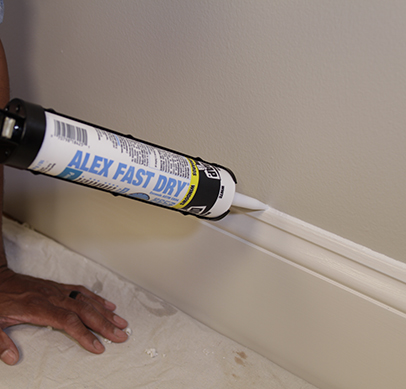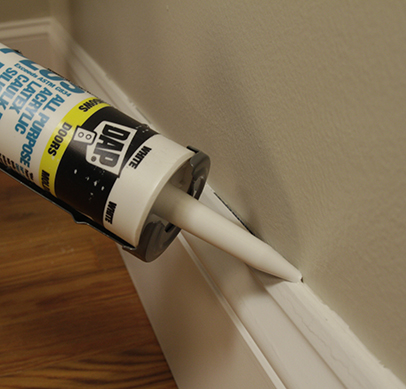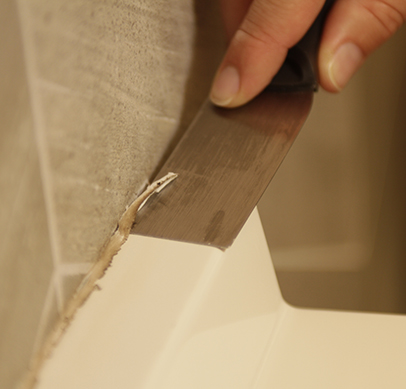
How to Remove Old Caulk & Sealant
Follow these steps and it’s out with the old and in with the new.

-
How to Remove Old Caulk and Sealant Step-by-Step
How to Remove Old Caulk and Sealant Step-by-Step
Tools
- Flexible putty knife or scraper
- Utility knife
- Caulk remover tool
- Isopropyl rubbing alcohol
- Bleach
- Small bucket
- Sponge
- No-scratch plastic scouring pad
- Gloves
Materials
- Krud Kutter® Caulk Remover
Indoors and outdoors—from sinks and showers to windows and siding—caulks and sealants keep water out and stop air leaks. But sometimes it needs to be replaced. So when you start seeing signs of caulk cracking, pulling away, or growing mold and mildew, it’s time to remove it and replace it. If you’ve ever tried to get rid of old caulk or sealant, you know it’s not always easy. Here’s how to finish the job with a couple of key tools and techniques, and some patience.
Step 1: Remove Loose Caulk
Remove any caulk that’s already loose with a flexible putty knife. Try loosening an edge and pulling the caulk off in strips. Work carefully to avoid scratching or marring the nearby surfaces.
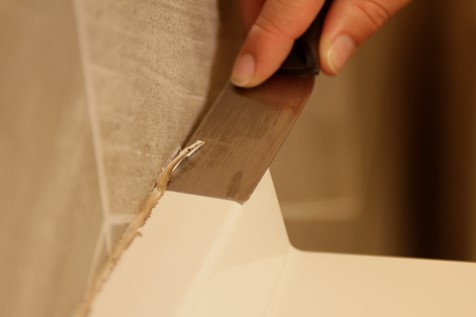
Step 2: Score the Caulk
Carefully score one edge of the remaining caulk with a putty knife or utility knife. This breaks the caulk’s bond to the surface.
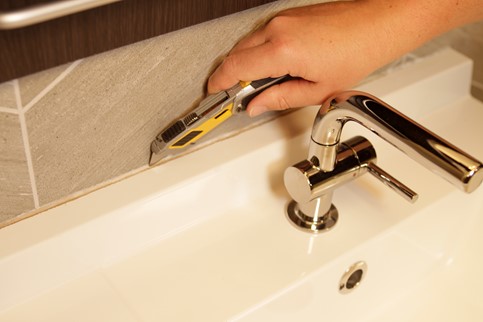
Step 3: Soften Caulk for Removal
Caulk removers soften caulk, making it easier to remove. Krud Kutter Caulk Remover has a gel-like consistency that clings to the surface of the caulk and stays wet for a long period of time. Caulk removers help to ease the removal of nearly all types of caulks, including silicone, polyurethane and acrylic latex. After application, let the caulk remover sit for 5 to 20 minutes. Longer soaking might be needed, depending on the type and amount of caulk or sealant to remove.
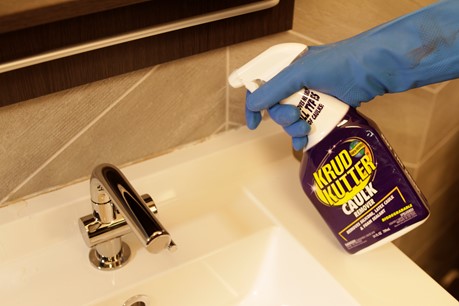
Step 4: Scrape Away Softened Caulk
After soaking, scrape away the softened caulk with a putty knife or specialty caulk remover tool. If you can’t scrape out all of the caulk or sealant, reapply the Caulk Remover and let it sit until the caulk is softened.
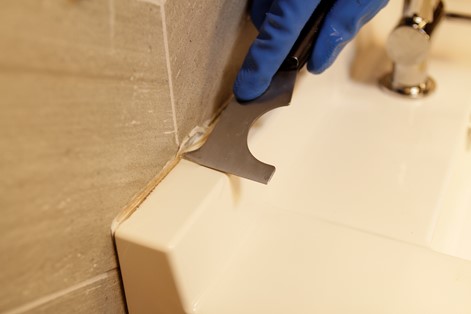
Step 5: Remove Residue
Even after you’ve removed the old caulk or sealant, there still might be some residue left. Make sure any residue is completely scraped away using a no-scratch plastic scouring pad. Then clean the surface by wiping down the area with isopropyl rubbing alcohol.
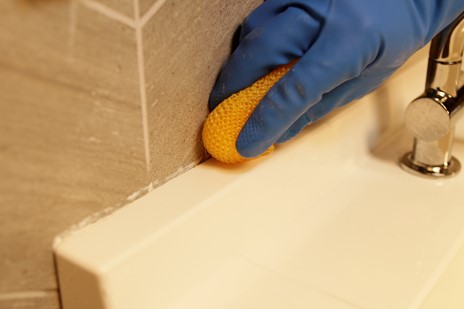
Step 6: Kill Mold and Mildew
If any mold or mildew is visible after removing the caulk, kill it by washing the area with a bleach and water solution (1 part bleach to 10 parts water). Rinse the area well and let it dry before applying new sealant.

-
Recommended Products
Product Recommendations

ALEX FLEX Premium Molding & Trim Acrylic Latex Siliconized Sealant
High-performance sealant specifically formulated for use on molding and trim applications.
View Product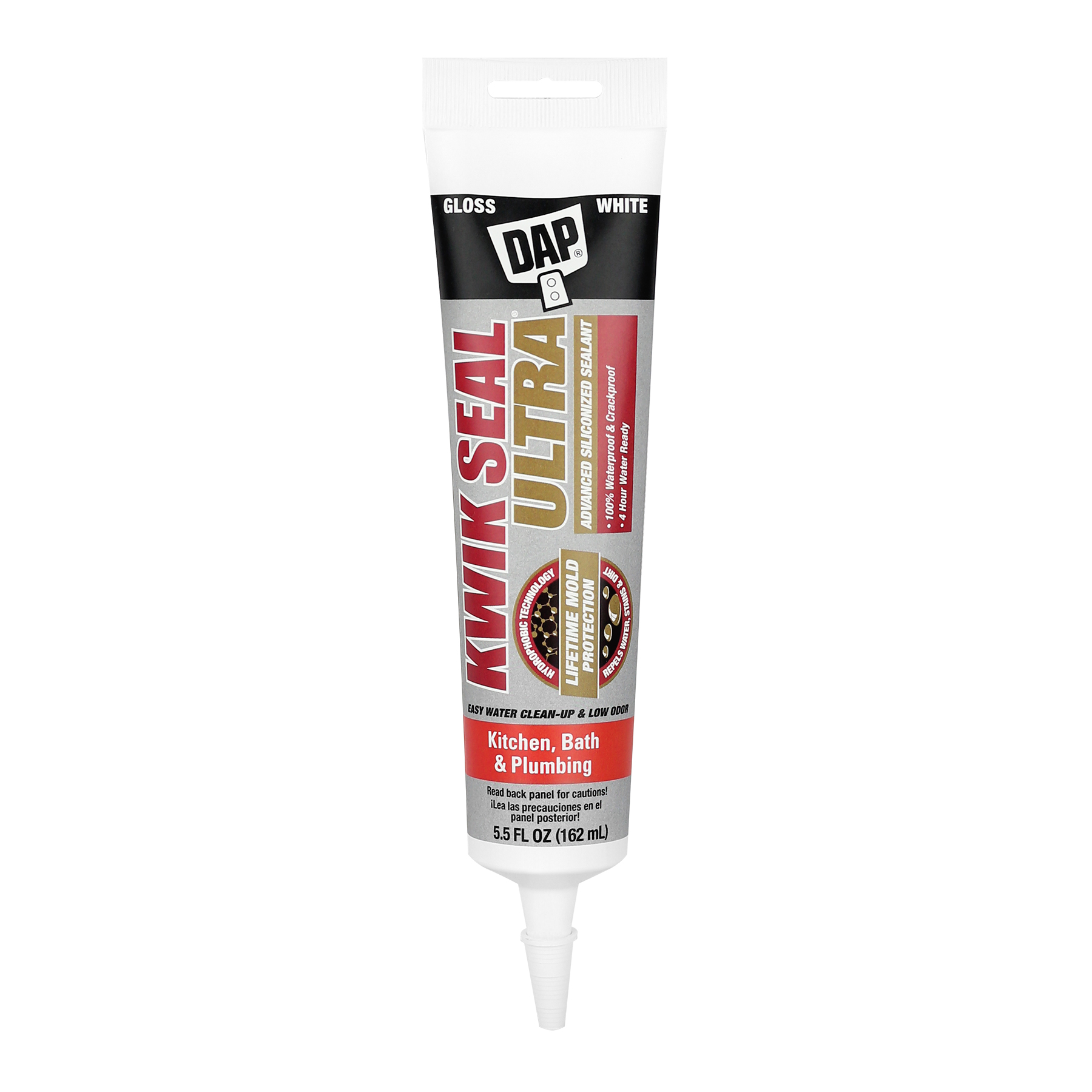
Kwik Seal Ultra Advanced Kitchen & Bath Sealant
Advanced kitchen & bath sealant with ultra-hydrophobic tech. Lifetime mold resistance, 100% waterproof, safe for granite. Easy application & cleanup.
View Product
DAP Silicone Max, Kitchen & Bath Sealant
100% silicone sealant for kitchen & bath. Mold & mildew resistant, waterproof seal. Ideal for sinks, tubs, showers.
View Product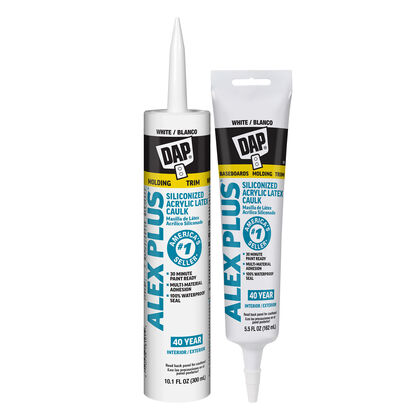
DAP Alex Plus All-Purpose Caulk
ALEX PLUS All-Purpose Caulk is a quality acrylic latex sealant for a flexible and waterproof seal. Paintable in 30 mins, mold/mildew resistant, 40-yr guarantee.
View Product -
Related Projects
Related Projects
![]()
How to Caulk Like the Pros
Hone your caulking skills with these 8 tips for indoor and outdoor projects.
Read More![]()
Choosing the Right Caulk or Sealant
Use this guide to help you find the right caulk or sealant for the most common home projects.
Read More![how to Recaulk a shower]()
How to Re-Caulk a Shower
When the caulk or sealant no longer looks attractive, take these steps to replace it.
Read More![]()
How to Tile a Kitchen Backsplash
Follow these 12 key tiling tips and give your kitchen a professional-quality upgrade.
Read More

 USA - EN
USA - EN Canada - EN
Canada - EN